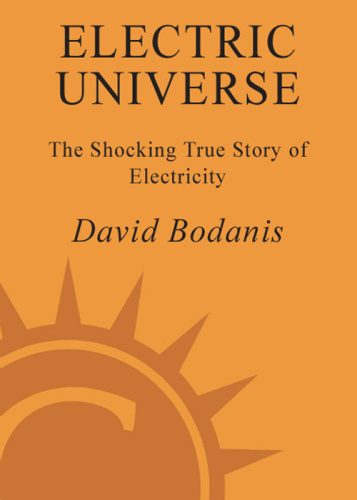
Electric Universe The Shocking True Story of Electricity
epub | 2.58 MB | English | David Bodanis
Description: In his bestselling E=mc2, David Bodanis led us, with astonishing ease, through the world's most famous equation. Now, in Electric Universe, he illuminates the wondrous yet invisible force that permeates our universe-and introduces us to the virtuoso scientists who plumbed its secrets.
For centuries, electricity was seen as little more than a curious property of certain substances that sparked when rubbed. Then, in the 1790s, Alessandro Volta began the scientific investigation that ignited an explosion of knowledge and invention. The force that once seemed inconsequential was revealed to be responsible for everything from the structure of the atom to the functioning of our brains. In harnessing its power, we have created a world of wonders-complete with roller coasters and radar, computer networks and psychopharmaceuticals.
A superb storyteller, Bodanis weaves tales of romance, divine inspiration, and fraud through lucid accounts of scientific breakthroughs. The great discoverers come to life in all their brilliance and idiosyncrasy, including the visionary Michael Faraday, who struggled against the prejudices of the British class system, and Samuel Morse, a painter who, before inventing the telegraph, ran for mayor of New York City on a platform of persecuting Catholics. Here too is Alan Turing, whose dream of a marvelous thinking machine-what we know as the computer-was met with indifference, and who ended his life in despair after British authorities forced him to undergo experimental treatments to "cure" his homosexuality.
From the frigid waters of the Atlantic to the streets of Hamburg during a World War II firestorm to the interior of the human body, Electric Universe is a mesmerizing journey of discovery by a master science writer.
From the Hardcover edition.
Amazon.com Review
Despite the fact that our lives are powered by electricity to an astonishing degree, most of us have little or no understanding of how or why it works. Instead, we rely on a blurry notion that it flo--like water--through wires to turn on our appliances. In Electric Universe, David Bodanis fools readers, by keeping them entertained and intrigued, into learning the science behind electricity. He does this by telling a series of stories, starting with how a backwoods American really invented the telegraph and how Samuel Morse stole the credit for it. From there, he works through the lives of Alexander Graham Bell, Thomas Edison, Michael Faraday, and other pioneers. He sho how their experiments affected their lives--never more poignantly than with the tragic story of Alan Turing, whose early work designing computers wasn't enough to prevent him from being driven to suicide. It's surprisingly easy to identify with some of these brilliant scientists, because Bodanis relates their failures as well as their successes. In the end, although we may continue using words such as "current" to describe the "flow" of electrons, Bodanis makes certain that we see electrical energy for what it really is, at a subatomic, quantum level. Even so, there's not a single boring bit in the book. Electric Universe is an excellent scientific history, one that reveals both the progress of knowledge and the strange science of the wiggling electrons that run our lives. --Therese Littleton
From Publishers Weekly
This entertaining look at how electricity works and affects our daily lives is highlighted by Bodanis's charming narrative voice and by clever, fresh analogies that make difficult science accessible. Bodanis examines electricity's theoretical development and how 19th- and 20th-century entrepreneurs harnessed it to transform everyday existence. Going from "Wires" to "Waves" to computers and even the human body, Bodanis pairs electrical innovations with minibiographies of their developers, among them Thomas Edison, Alexander Graham Bell, Guglielmo Marconi, Heinrich Herz and Alan Turing. In each case, Bodanis deepens his narrative by charting early failures-Edison's difficulty in finding a workable filament for the electric light bulb, for example-and financial struggles. And Bodanis can be a wry commentator on his subjects, noting, for example, how bedeviled Samuel Morse was by his telegraph patents-when the telegraph was actually invented by Joseph Henry, who refused to patent it. Surprisingly, Bodanis goes beyond the inorganic world of devices, delving deeply into the role electricity plays in the seemingly inhospitable "sloshing wet" human body, such as why being out in the cold makes us clumsy, or how alcohol works in the nervous system. Those who don't generally read science will find that Bodanis is a first-rate popularizer-as he also showed in his earlier E=MC2-able to keep a happy balance between technical explanation and accessibility. Copyright © Reed Business Information, a division of Reed Elsevier Inc. All rights reserved.
Clic Down
From Here
From Here
From Here

